KANAZAWA
LITTLE KYOTO
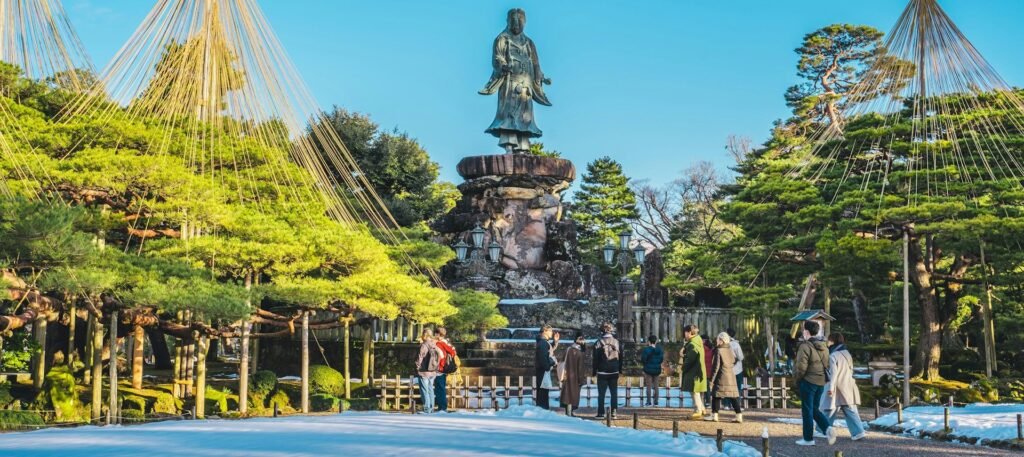
It helps keep this site running, and we appreciate your support!
Sightseeing
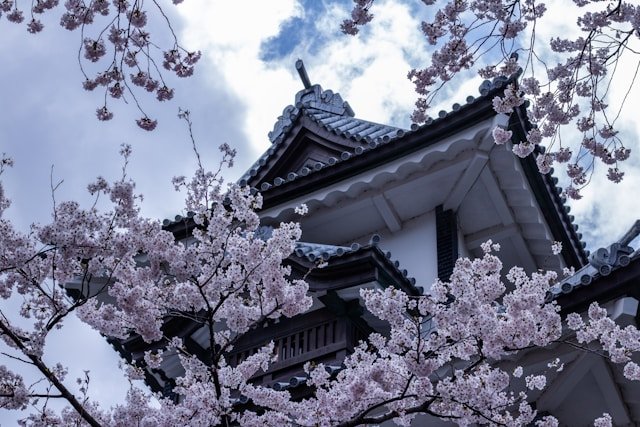
Kanazawa Castle
This striking fortress, once the seat of the powerful Maeda clan during the Edo period, stands as a testament to Kanazawa’s samurai heritage with its white-tiled roofs and robust stone walls. The grounds are free to explore, though the restored interiors—like the Gojikken Nagaya storehouse—require a small fee and offer insights into feudal life. Paired with Kenrokuen just across the moat, it’s an easy half-day combo, letting you wander through history amid watchtowers and gates. The castle’s park-like setting also makes it a relaxing spot to soak in the past, with views of the Japanese Alps peeking in the distance on clear days.
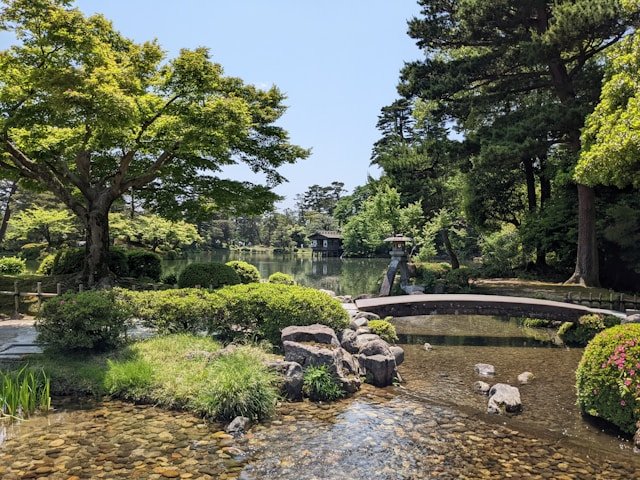
Kenrokuen Garden
Widely celebrated as one of Japan’s top three landscape gardens, Kenrokuen is a sprawling 25-acre masterpiece that embodies the six attributes of a perfect garden: spaciousness, tranquility, artifice, antiquity, water, and panoramic views. Located right beside Kanazawa Castle, it transforms with the seasons—think cherry blossoms cascading over stone bridges in spring or snow delicately dusting the famous two-legged Kotojitoro Lantern in winter. Entry is a modest ¥320, and you can sip matcha at a traditional teahouse while gazing at ponds and meticulously pruned pines. It’s an ideal spot for a leisurely morning walk or some stunning photography, drawing you into Kanazawa’s natural elegance.
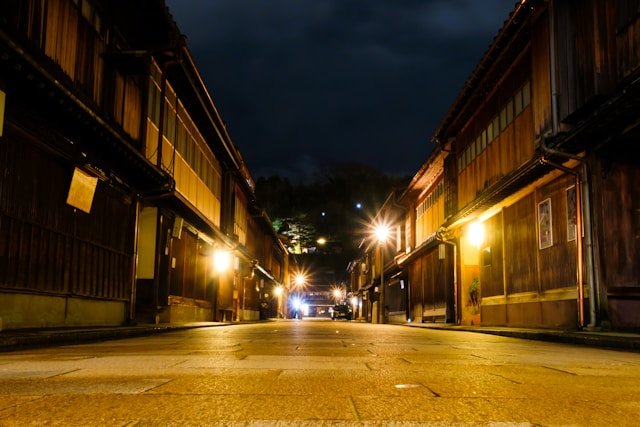
Higashi Chaya District
Step back in time in this beautifully preserved geisha district, where wooden teahouses with lattice facades line cobblestone streets, exuding old-world charm. Once a hub for entertainers in the 19th century, it’s now a cultural hotspot where you can enjoy matcha or sake in a historic setting, browse shops selling gold-leaf crafts (Kanazawa produces 99% of Japan’s supply), or—if you’re lucky—catch a geisha performance. Visit in the late afternoon when the soft light enhances the ambiance and the crowds thin out, offering a quieter taste of Kanazawa’s refined traditions. It’s a living postcard of Japan’s past, perfect for slow exploration.
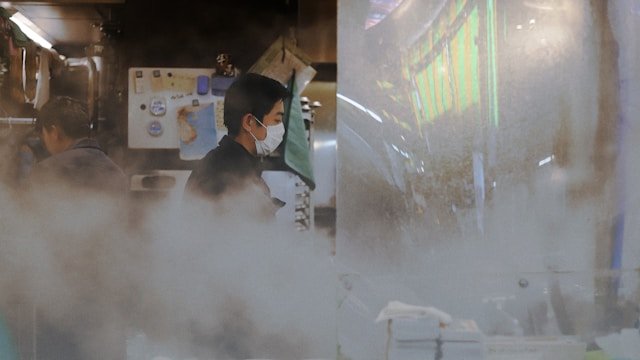
Omicho Market
Dubbed “Kanazawa’s Kitchen,” this vibrant market has been feeding locals since the Edo era and remains a bustling heart of the city, just a short walk from the downtown area. With over 170 stalls, it’s a seafood lover’s dream—piles of glistening crab, sushi-grade tuna, and sea urchin tempt visitors daily, often at prices far friendlier than Tokyo’s markets. You can grab a quick kaisendon (seafood rice bowl) for lunch or simply wander, soaking in the chatter of vendors and the salty sea aroma. Open from morning to early evening, it’s a deliciously authentic stop that captures Kanazawa’s coastal soul.
Activities
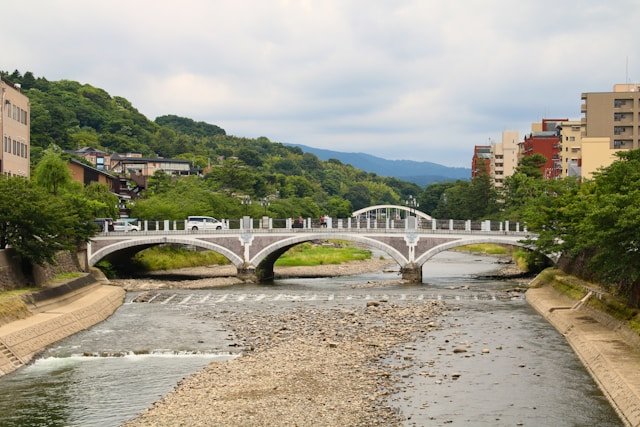
Biking Along the Sai River
Rent a bike (around ¥1,000/day from stations or shops) and pedal the scenic Sai River path, a locals’ favorite that winds through residential areas and parks away from tourist hubs. You’ll pass bridges, spot herons, and feel Kanazawa’s laid-back pulse, with stops at riverside cafés if you need a break. It’s an active, budget-friendly way to see the city’s quieter charm at your own pace.
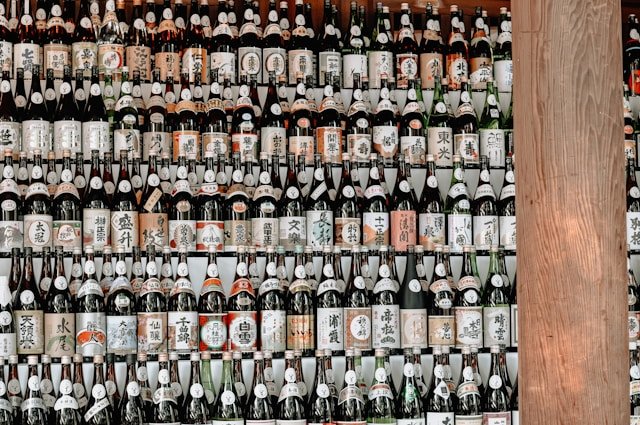
Sake Tasting at Fukumitsuya Brewery
Visit this historic sake brewery, one of Kanazawa’s oldest, for a tasting session of crisp, local brews made with pure spring water from the nearby mountains. Free tours explain the fermentation process, and ¥500-¥1,000 gets you a flight of samples in their sleek tasting room. It’s a tasty way to unwind and appreciate the region’s rice-wine legacy, with bottles to take home if you’re hooked.
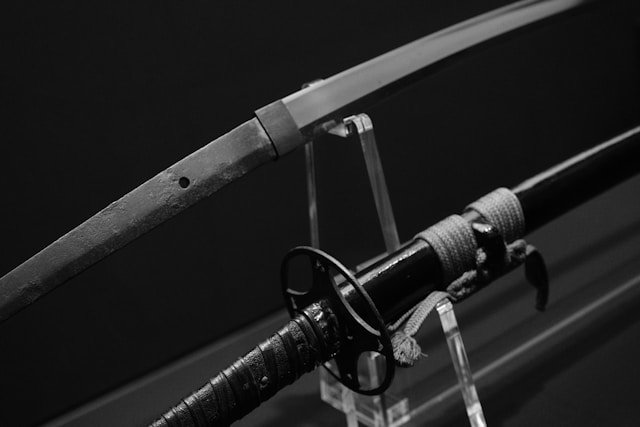
Ninja Weapon Museum and Costume Rental
Near the Myoryuji Temple (not on our last list!), this quirky museum lets you handle replica ninja weapons like shuriken and dress up in full ninja gear for photos, all for about ¥1,500. The staff share tales of stealthy warriors tied to Kanazawa’s samurai past, making it a playful, interactive stop. It’s a hit with kids or anyone craving a lighthearted history lesson.

Gold Leaf Workshop at Hakuichi
Dive into Kanazawa’s craft heritage with a hands-on workshop at Hakuichi, where you can decorate items like chopsticks or boxes with gold leaf, a skill the city has perfected as Japan’s top producer. For about ¥1,000-¥2,000, you’ll get a 30-minute session guided by artisans, leaving with a shiny souvenir. It’s a fun, creative way to connect with local traditions, and the store’s nearby so you can browse gold-flecked goodies afterward.
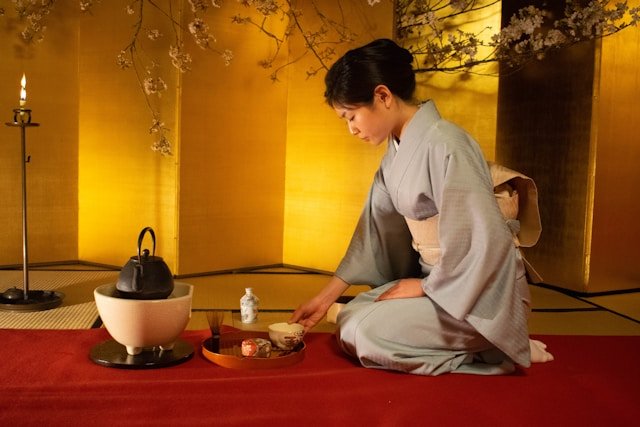
Tea Ceremony Experience at Gyokusen’en Garden
Tea Ceremony Experience at Gyokusen’en Garden - Skip the main attractions and book a traditional tea ceremony at this lesser-known garden, a tranquil oasis run by a tea master family. For around ¥3,000, you’ll kneel on tatami mats, learn the art of matcha preparation, and sip it with a wagashi sweet, all in a 400-year-old setting. It’s an intimate, meditative escape that reveals Kanazawa’s refined side, perfect for a quiet afternoon.
Flights
Spring (March-May) dazzles with cherry blossoms but brings crowds and higher costs, while summer (June-August) is hot and humid, suiting indoor museum visits. Fall (September-November) offers mild weather and stunning foliage, and winter (December-February) delivers snowy charm, perfect for teahouses, though flights may face delays.
Hotels
Situated on Kanazawa’s main shopping and dining street, this hotel delivers excellent bang for your buck with its central location and stylish, spacious rooms—larger than typical Japanese standards. The free drinks (alcoholic and non-alcoholic) in the lobby from 3:00 PM to 7:00 PM are a delightful bonus, and you’re within walking distance of Kenrokuen Garden and the Samurai District. It’s a smart pick for travelers wanting convenience and a touch of luxury without breaking the bank.
Located just a 2-minute walk from JR Kanazawa Station, this hotel is a steal for its price, offering modern rooms with comfy beds, free Wi-Fi, and a top-floor onsen (hot spring bath) with a sauna—perfect for relaxing after a day of sightseeing. Guests rave about the complimentary ramen served from 9:30 PM to 11:00 PM and free coffee in the lobby, adding unexpected value. Its proximity to the station and bus routes makes exploring Kanazawa’s castles and gardens a breeze, all while keeping costs low.
A short stroll from Omicho Market and Oyama Shrine, this hotel offers incredible value with its modern design, free perks like all-day coffee, and an onsen bath that rivals pricier options. The rooms are clean and functional, and the location puts you near top attractions like Kanazawa Castle (20 minutes on foot). The complimentary snacks and drinks throughout the day elevate the experience, making it feel like a splurge at a mid-range price.
Just 600 meters from Kanazawa Station, this modern apartment-style hotel is a fantastic deal for families or groups, offering spacious suites with kitchens, living rooms, and even massage chairs—all at a fraction of luxury hotel prices. The private parking and café breakfast downstairs add convenience, while the proximity to transit hubs keeps sightseeing costs low. It’s a home-away-from-home vibe that delivers comfort and savings in equal measure.
Dining
This vibrant seafood rice bowl is a Kanazawa classic, piled high with fresh catches like crab, shrimp, and sea urchin, sourced daily from the Sea of Japan. Found at spots like Omicho Market, it’s a colorful, affordable taste of the coast—often under ¥2,000—served with soy sauce and wasabi to highlight the pristine flavors. It’s a must for seafood lovers craving a quick, delicious bite.
A hearty duck stew rooted in samurai cuisine, Jibuni features tender duck slices simmered in a rich dashi broth with vegetables like bamboo shoots and shiitake, thickened with wheat flour and a touch of wasabi. Traditionally a winter dish, it’s served at local izakayas for around ¥1,500, offering a warm, savory glimpse into Kanazawa’s feudal past. Its unique texture and subtle spice make it unforgettable.
Kanazawa’s quirky take on comfort food, Hanton Rice layers ketchup-fried rice with a fluffy omelet, crispy fried fish (often cod), and a drizzle of tartar sauce. Born in the 20th century from Hungarian influences (hence “Hanton”), it’s a filling, budget-friendly meal—around ¥1,000 at diners like Grill Otsuka—blending Japanese and Western vibes in a delightfully odd mashup.
Highlighting the region’s prized Kaga produce, this dish features seasonal veggies like lotus root, sweet potatoes, or pumpkin, lightly battered and fried to crisp perfection. Served at restaurants for ¥1,200-¥2,000, often with a dipping sauce or salt, it’s a fresh, crunchy way to taste Kanazawa’s fertile lands. The vibrant colors and farm-to-table ethos shine through every bite.
Darker and thicker than typical Japanese katsu curry, this local twist comes with a breaded pork cutlet atop sticky rice, smothered in a robust, slightly sweet gravy and a side of shredded cabbage. Popular at joints like Champion’s Curry for under ¥1,000, it’s a hearty, soul-warming dish that locals adore—messy, satisfying, and distinctly Kanazawa.
Tips
Spring and fall are peak times for beauty (blossoms and foliage), but book accommodations early as hotels fill up fast; summer’s humid, so indoor activities work best, while winter’s snow adds charm but may slow travel. Fly into Komatsu Airport (via Tokyo, Seoul, or Shanghai) and take the 40-minute bus to the city, or use the Hokuriku Shinkansen from Tokyo (2.5 hours) for a scenic ride—buy a JR Pass if you’re exploring beyond Kanazawa.
Comfy shoes for walking compact streets, layers for unpredictable weather, and an umbrella (rain’s common). Cash is key—many small shops and eateries don’t take cards, and ATMs can be sparse outside tourist zones. English is limited, so a translation app like Google Translate is a lifesaver for menus or directions. Stick to basic etiquette—quiet voices in public, no shoes indoors at traditional spots—and rent a bike or use the Kanazawa Loop Bus (¥200/ride) to zip between sights affordably. Lastly, try local treats like gold-leaf ice cream; they’re fun, cheap, and quintessentially Kanazawa.
Spring (March-May) bursts with cherry blossoms, ideal for gardens, though it’s busy and pricier; fall (September-November) offers cool weather and fiery foliage, a photographer’s dream; summer (June-August) is hot and sticky, better for indoor museums, while winter (December-February) brings snow-dusted charm, perfect for cozy teahouses, but pack for potential travel delays. Fly into Komatsu Airport (via Tokyo, Seoul, or Shanghai) and catch the 40-minute airport bus (¥1,150), or take the Hokuriku Shinkansen from Tokyo (2.5 hours, ¥14,000 one-way)—a JR Pass saves cash if you’re venturing further.
Most small shops, eateries, and even some mid-range spots don’t accept cards, so carry yen (¥1,000-¥5,000 notes are handy); ATMs are at 7-Eleven or post offices, but rural areas lack them, so stock up downtown. For transport, the Kanazawa Loop Bus (¥200/ride, ¥500/day) circles key sights, while rental bikes (¥1,000/day) suit the flat, compact city—download the “Machinori” app for easy access; taxis are pricey but useful for late-night returns. Walking’s free and reveals hidden gems, just wear comfy shoes for uneven paths.
English signage and speakers are rare outside tourist hubs, so preload Google Translate or Pocketalk for menus, signs, and chats; offline mode helps where Wi-Fi’s spotty. Pack light but smart: layers for shifting weather, an umbrella for frequent rain, and a small bag for day trips. Respect local ways—quiet on buses, no shoes in traditional spaces—and grab a free city map at the station. Sample gold-leaf ice cream or sake for a cheap, local thrill, and hit smaller festivals (like April’s cherry blossom events) for a crowd-free cultural fix.
